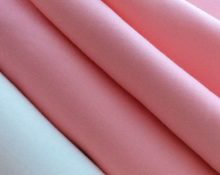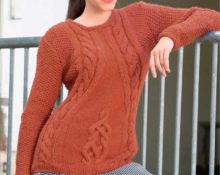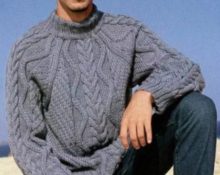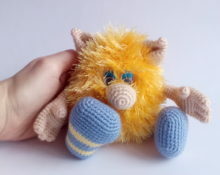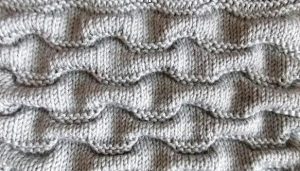
The cloque effect is the name of a voluminous wool knitting in which the back side is knitted smooth, and the front side consists of pleats, tucks, bulges, folds or bubbles of the desired size.
The name “clouquet effect” came to us from France. Translated from French, this word means “to bubble.” The cloque effect originally appeared in sewing. This was the name for fabric with swollen bubbles on one side and smooth, even on the other. It could be silk or wool. Later, the effect spread to knitting. The equipment looks voluminous and attractive. Products knitted using this technique are distinguished by their originality and effectiveness.
Looking at the knitted fabric, it seems that it is very difficult to achieve such a pattern. In fact, even a novice craftswoman can knit the cloque effect with knitting needles. Knitting is quite simple to do. And if you understand the principle of execution, you will be able to independently come up with various patterns using this technique.
In simple terms, the “clouque effect” pattern is achieved by knitting the fabric in satin stitch (a row of knit stitches + a row of purl stitches) with periodic knitting of bulges. To obtain them, use a third knitting needle, on which some of the loops are removed from the knitted fabric of the bottom row. Then these loops are knitted with the knit stitches of the new row. This achieves the effect of volume and convexity. The size of the tuck is determined by which of the bottom rows you take the loops from. The lower, the more voluminous your fold will be. That’s the whole principle of knitting this style of fabric.
Let's consider the simplest version of this pattern - horizontal. Let's knit a sample.
- Cast on 20 stitches and knit 20 rows using stockinette stitch.
- From the wrong side of the sample fabric, insert the third knitting needle into the tenth row, picking up the fifth to tenth loops on it.
- We knit the 21st row in this order:
We knit 5 pieces of loops in satin stitch, grab 10 pieces from 2 other knitting needles, again 5 pieces in satin stitch.
If we arrange the tuck folds in a checkerboard pattern, we get a completely different type of pattern. The knitting principle is no different from the previous one. Only the bulges are located on the loops between the folds, checkerboard.
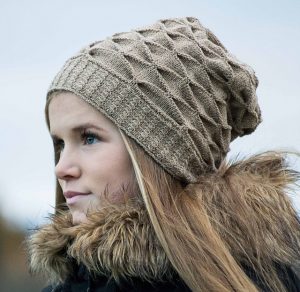
A wavy cloque can be obtained by arranging small folds, located one above the other, but with large distances between them.
The folds are made through 12 rows of knitting in this order: 5 fold loops are knitted together with loops taken 6 rows below, and 15 knit stitches are skipped.
The cloque pattern with cells is another type of knitting. To understand how it is knitted, consider a master class on a sample, 14 stitches wide and 20 rows high.
- Cast on 1 row of purl stitches.
- 2nd – facial.
- We continue to knit even rows with knit stitches, and odd rows with purl rows.
- We knit the front stitch from the 1st to the 8th row.
- In the 9th row we do this: purl 12, which are located under the first loop, knit together purl + 12 purls. We pull up the 2 lower loops and knit them with the upper purl loop.
- 10th – knit.
- We knit eight rows in satin stitch.
- 19th row - we make folds with their offset by 6 loops.
Knitting with a cloque effect is most often used to create various accessories: hats, scarves, leg warmers, snoods, mitts, stoles, bags. But many people make cardigans, various blouses and even coats using this technique. There are endless options for the cloque effect. These can be classic patterns or abstract ones, with protuberances of different sizes and shapes. It all depends on your imagination and imagination.


 0
0